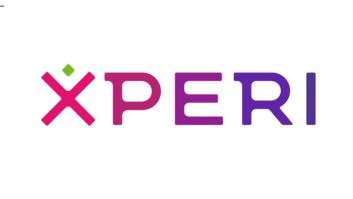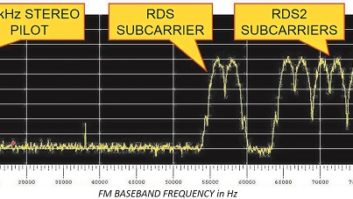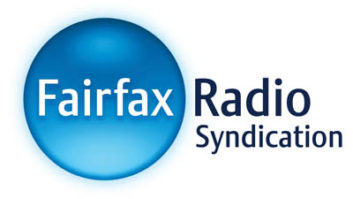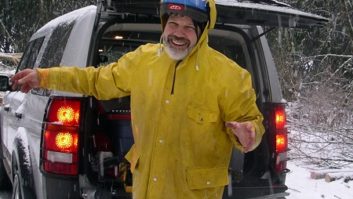The author is trustee of the Ennes Educational Foundation Trust.

The Ennes program includes hard-core material as well as ‘breath mints,’ shorter, often whimsical topics on diverse topics. My computer monitor has been “temporarily” perched on a copy of “The Cellular Roaming Handbook” since I received the book a quarter century ago. Now who among us even remembers what cellular roaming was, or why it was important to a broadcast engineer?
For more than a few years, I’ve been lucky enough to help put together a program that has come to be the largest yearly gathering of broadcast engineers in one room, at least on this continent. I know that reading this article is the point at which many broadcast engineers decide whether going to NAB at all, not to mention whether to attend sessions on a Saturday, is worth the political capital and out-of-pocket funds.
I could go on about the things we all know are true: fewer people doing more work, the “always on” nature of our life, the changes in distribution and technology that seem slow and distant … then, as if overnight, these new distribution means appear in our rearview mirror and we wax nostalgic.
I’m seeing my roaming book/monitor perch as metaphor. I’m going to NAB to learn about what’s next. I was thinking that this year’s program was the most radically different; but it’s not. In my tenure working on the Ennes/NAB/PBS educational program, no two years looked more than vaguely alike, because each year we ask, “What is it broadcast engineers most need to know?”
This year, whether you’re a front-line tech setting up encoders, a manager negotiating for content delivery network services, an architect integrating new distribution or a visionary leading the charge, the thing we most need to become comfortable with is migrating our content to the world beyond transmitters and the multichannel video program delivery platforms that reach the vast majority of our viewers and listeners.
The title of the Ennes Workshop is “Alternate Broadcast Delivery: How to Make It Work.”
In the stream
On Saturday we start with a two-hour tutorial on streaming media. This year we are pleased to have Jan Ozer, an author certain to be found several times over on the bookshelves of streaming-aware broadcast engineers. Jan appears at virtually every streaming media industry event, teaches streaming and video production and is a contributing editor to Streaming Media magazine and OnlineVideo.net; he also blogs for other outlets. He has written or co-authored approximately 15 books on digital video-related topics, including “Video Compression for Flash, Apple Devices and HTML5,” published in 2011.
Previous attendees know that we work in a few brief “breath mints”: short, often whimsical topics related if not directly relevant to broadcast.
Our first is John Footen’s argument that viewership habits are not so much about generation but age. Will millennials tweet in old age? John is with Cognizant Technology Solutions. Along the same line, Radio World contributor James O’Neal introduces us to the late Granville Klink, certainly one of the most fascinating people in this broadcast engineering business; what a legacy.
Then there is Jake Sigal of Livio Radio, who loves his smartphone, apps, music, driving and being available for contact at all times through all media; what he doesn’t love is that every single app, phone and car is reaching him in complicated ways, resulting in what he sees as the macro issue of our times: fragmentation.
I love the breath mints. Broadcast engineering is more than wire and protocols.
Geo-location
Television and radio stations, more often than not, have use of content within a DMA or other geographical area. While multichannel video program delivery platforms can “black out” physical areas, it’s not so easy to control distribution of Internet-delivered content.
Lionel Garin, senior director of Qualcomm’s Technology, Position and Location Department, presents a tutorial on the technology and options for geo-location of devices receiving content.
Then, regarding the movement of content within the facility, some anticipate a day when Cat-6 cable all but replaces coax. Belden’s Steve Lampen, SBE Educator of the Year, unveils a tutorial on Audio Video Bridging, which is contending to be a part of this transition. He’ll discuss AVB routing, timing and why this technology might find significant use in AV and eventually production and broadcasting.
AES-X192 might also answer interoperability questions for digital packet switched audio in radio and television facilities. Kevin Gross of AVA Networks has been working on this with AES and SMPTE, and will teach us about this up-and-coming standard intended to end the proliferation of standards for audio distribution.
Cable too is seeing a transition, not just from analog to QAM, but to IP distribution. Cable represents a large piece of a broadcaster’s distribution, and interfacing and working with this evolving delivery platform should be high on any engineer’s list of topics to follow. So Vang, vice president of video technology for Cable Television Laboratories Inc. (CableLabs), presents the seminar.
Moving content on the Internet presents more options than one might think. John Maniccia of Octoshape talks about a unique approach to over-the-top video delivery and video delivery to multiple screens in an effort to enable and offer large-scale, high-quality networks. Moving content to the user via “over the top” or OTT also presents options. Skitter is an up-and-coming potential participant in the broadcast/OTT space.
From Robert Saunders, president of Skitter, we share lessons learned building an OTT platform and the opportunities for broadcasters.
With ever more protocols, players and formats for video distribution, each having their sweet spot in the ecosystem, it seems that the sheer quantity might be one of the biggest impediments to Internet distribution. MPEG-DASH, the first adaptive bit rate HTTP international standard, may well play a role in our OTT puzzle. Kevin Streeter, senior architect of Adobe Primetime, presents the concluding session of the day.
Find the full list of Ennes Workshop topics and other Broadcast Engineering Conference sessions at www.nabshow.com/2013/education/conferences/.









